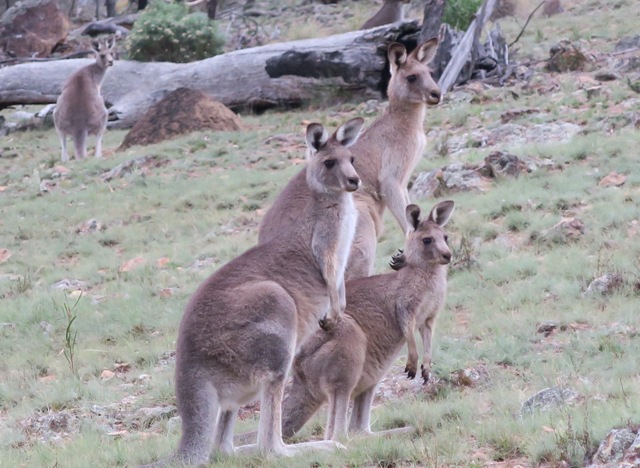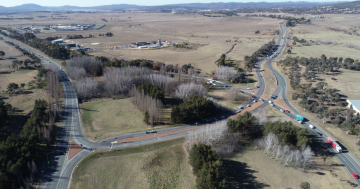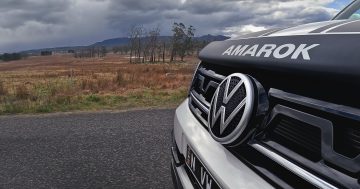
Canberra is heading for a record year for kangaroo-related road crashes as food supplies are depleted and more kangaroos are attracted to the ‘green pick’ by our roadsides. Photo: Supplied.
Canberra is heading for a record year for kangaroo-related road crashes, with Long Gully Road and Sulwood Drive in the city’s south identified as the worst hotspots for collisions.
ACT Parks and Conservation director Daniel Iglesias said that there is likely to be close to 4,000 eastern grey kangaroos killed on ACT roads in 2018 – an increase of around 1,300 on previous years and something “never seen here before.”
Mr Iglesias said that it is little more than halfway through the year but already ACT rangers have been called out to 2,291 road incidents involving kangaroos to date. This compares to 2,634 incidents for the whole of last year and 2,889 the year before.
He said the on-call ranger would normally only be called out to three or four incidents an evening but in recent times it is not unusual for them to have to deal with 20 incidents an evening.
Long Gully Road and Sulwood Drive are currently seeing the highest number of kangaroo-related collisions but the Monaro Highway and Caswell Drive are also problem areas.
Other kangaroo-collision hotspots identified by ACT rangers include William Hovell Drive, Limestone Avenue, Hindmarsh Drive, Cotter Road, Tharwa Drive, Mugga Way and roads around Red Hill Nature Reserve.
Mr Iglesias said that the increase in kangaroo collisions is being caused by Canberra’s extremely cold and dry weather depleting grass supplies for the kangaroos and attracting them to the “green pick” at roadsides.

The extremely cold and dry weather is forcing kangaroos to leave local reserves to find food. Photo supplied.
He said the cold weather and frosts dry out the grass and take away its nutritional value, while the lack of rain adds to the impact, with the dry spell forecast to continue.
“It’s almost like a perfect storm in terms of animals doing it hard,” Mr Iglesias said.
Kangaroos also tend to be looking for food at the same time that most drivers are on the road.
“We’re all driving at the times when dawn and dusk is happening, which is when they move around the most,” Mr Iglesias said.
He urged people driving in suburbs that front parks or reserves to be very vigilant.
“When a kangaroo comes to you at an angle last minute there’s nothing you can do.”
Mr Iglesias advised motorists to get to know the times and places kangaroos are most likely to be on the road and to be particularly careful. Slowing down helps because it improves reaction times and can reduce the impact of a crash.
Earlier this year, Canberra was named the animal collision capital of Australia for the second year running – recording more collisions between motorists and animals than any other Australian capital city.

The main animals that drivers collide with on ACT roads. Image supplied by AAMI.
According to data from car insurer AAMI, almost one in 10 motor accidents in Canberra are caused by collisions with animals. The data showed that kangaroos were involved in 92 per cent of collisions, with wombats coming next in line but only being involved in two per cent of collisions.
Have you collided with a kangaroo recently or had a close call? Can anything be done to reduce the number of kangaroo-related crashes? Let us know in the comments below.














